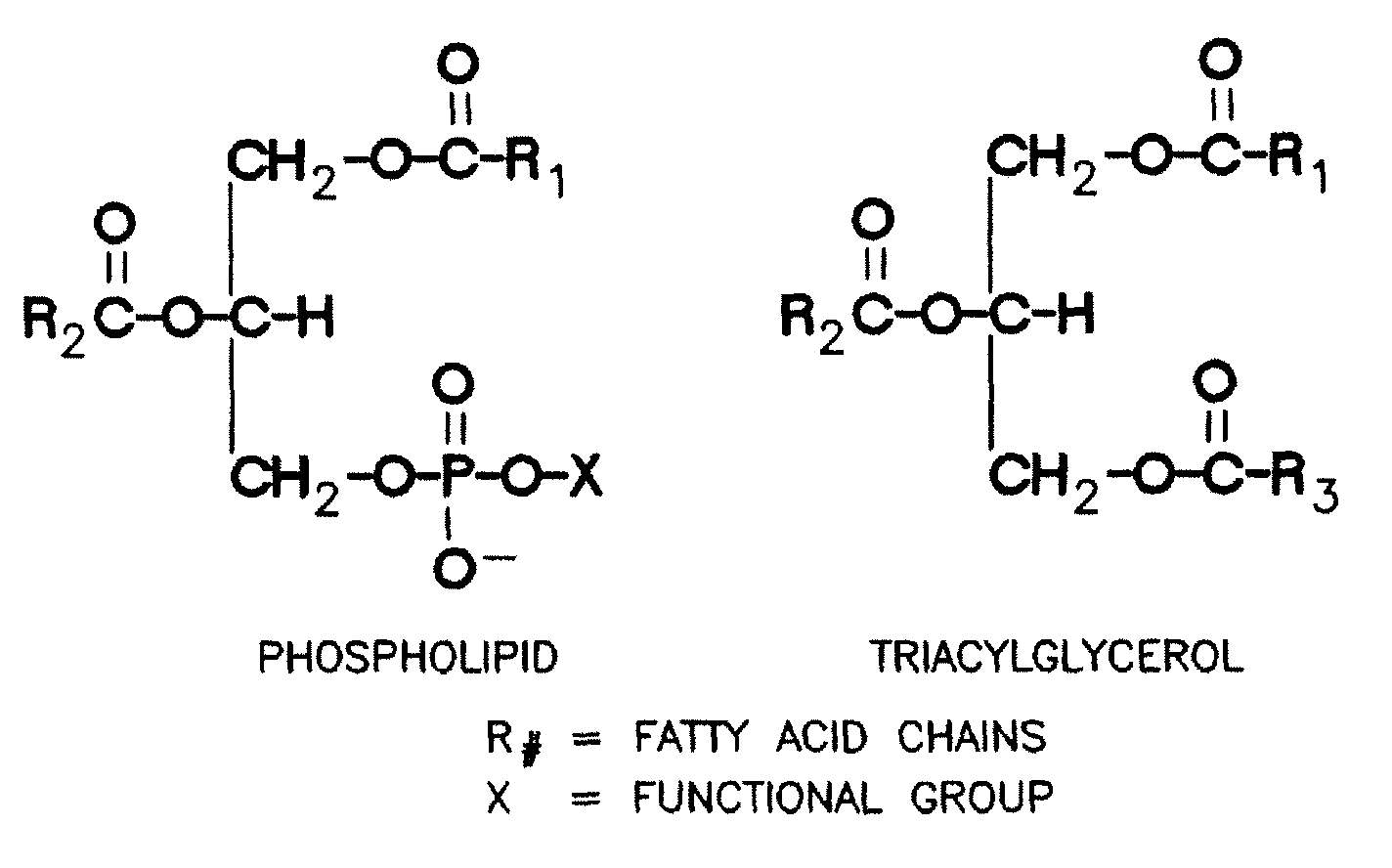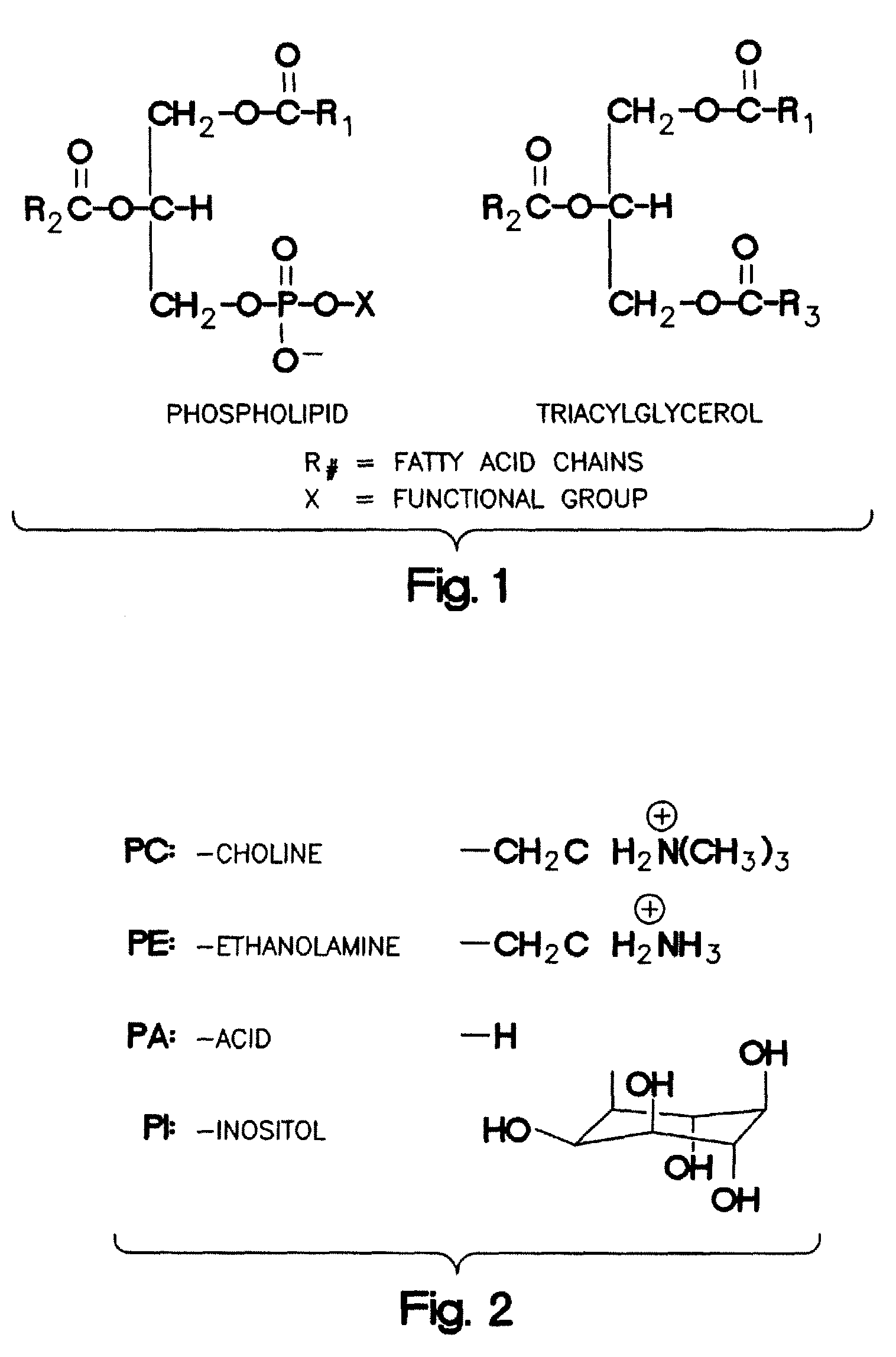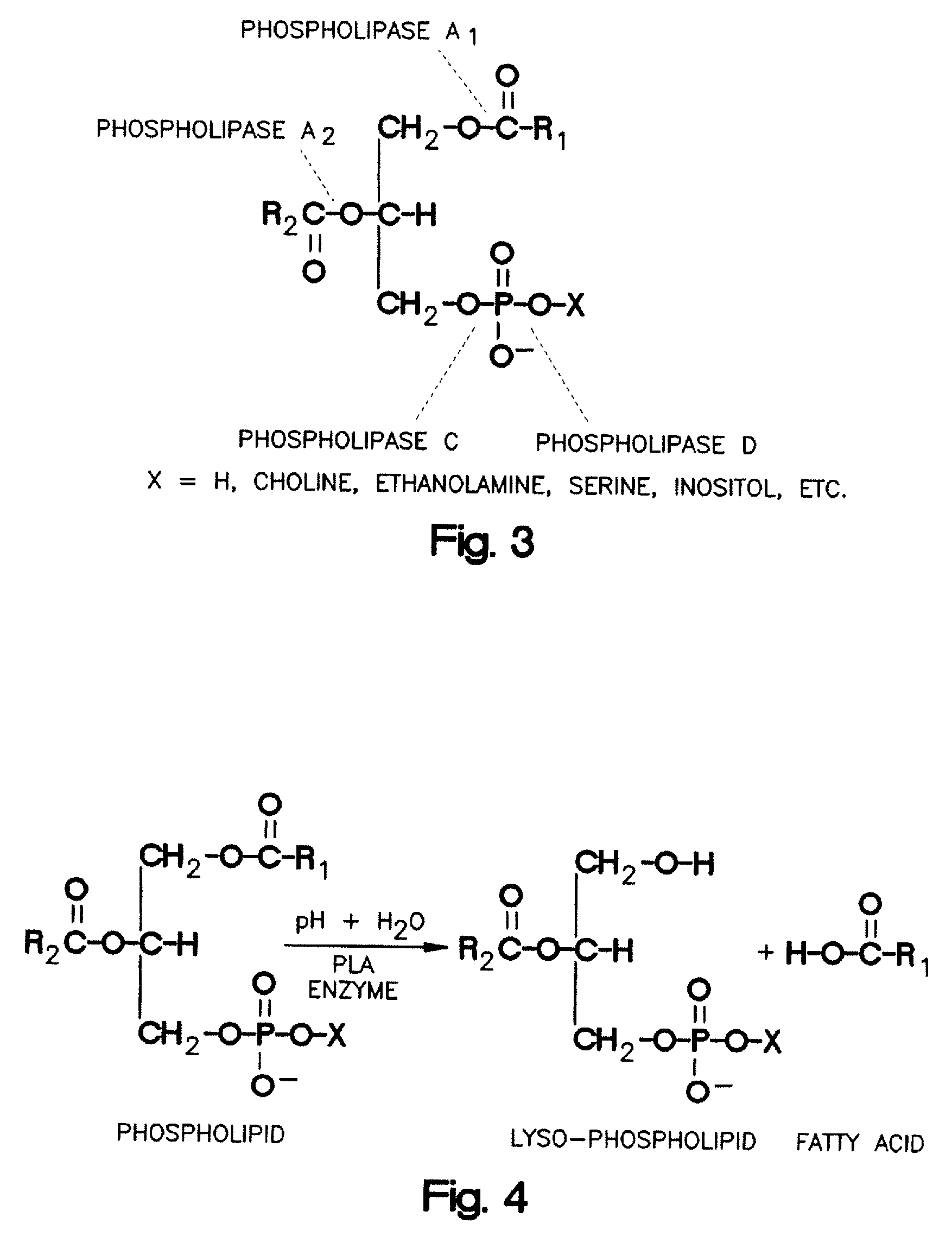Enzymatic degumming utilizing a mixture of PLA and PLC phospholipases with reduced reaction time
a technology of phospholipids and phospholipids, which is applied in the field of enzyme degumming utilizing a mixture of pla and plc phospholipases with reduced reaction time, can solve the problems of phospholipids generating almost all of the losses associated with the refining of vegetable oils, and the inability to physically separate or recover emulsified oil from the emulsion, and is considered a process loss
- Summary
- Abstract
- Description
- Claims
- Application Information
AI Technical Summary
Benefits of technology
Problems solved by technology
Method used
Image
Examples
example 1
[0073]Control: Water Degumming
[0074]1965.4 grams of crude soybean oil containing 746 ppm phosphorous was heated to 70-75° C. under normal agitation utilizing an overhead mixer. To the warm oil, 39.4 grams of de-ionized water was added with vigorous agitation for 1 minute. The mixer was slowed to normal speed (90 rpm) to allow the gums to flocculate for 30 minutes. The oil was then centrifuged, and the separated oil and wet gums were collected. The residual phosphorous in the water-degummed oil was 80.7 ppm.
example 2
[0075]Control: Single Enzyme Degumming with Phospholipase A1 (PLA1)
[0076]1997.9 g of crude soybean oil containing 746 ppm phosphorous was heated to 75-80° C. under agitation utilizing an overhead mixer. 2.0 grams of 50% w / w solution of citric acid was added and the mixture was sheared for 1 minute. The oil underwent normal agitation for one hour with an overhead mixer. The oil was allowed to cool with agitation at normal speed until the oil temperature was at 40-45° C., then 1.8 milliliters of 4 molar sodium hydroxide solution was added, and the mixture was shear mixed for 10 seconds. The citric acid and caustic formed a weak buffer with a pH of 4.5. With the temperature maintained at 40-45° C., first 60.0 grams of de-ionized water was added and the mixture was shear mixed 1 minute, then 0.1044 grams of Novozymes' Lecitase® Ultra PLA1 was added and the entire mixture was sheared for 1 minute. The oil mixture was agitated at normal speed with an overhead mixer for 4 hours at a temper...
example 3
[0077]Control: Single Enzyme Degumming with Phospholipase C (PLC)
[0078]2011.1 grams of crude soybean oil containing 746 ppm phosphorous was heated to 55-60° C. under normal agitation utilizing an overhead mixer. 60.3 grams of de-ionized water was added and the mixture was shear mixed for 1 minute. 0.1051 grams of Diversa's Purifine™ (PLC lipase BD16449 containing 205 U / mg) was added and the mixture was sheared for 1 minute. The oil mixture underwent normal agitation for 1 hour at 50-63° C. The enzyme treated oil was then centrifuged, and the separated oil and wet gums were collected. The residual phosphorous in the PLC degummed oil was 70.9 ppm.
PUM
| Property | Measurement | Unit |
|---|---|---|
| temperature | aaaaa | aaaaa |
| temperature | aaaaa | aaaaa |
| reaction time | aaaaa | aaaaa |
Abstract
Description
Claims
Application Information
 Login to View More
Login to View More - R&D
- Intellectual Property
- Life Sciences
- Materials
- Tech Scout
- Unparalleled Data Quality
- Higher Quality Content
- 60% Fewer Hallucinations
Browse by: Latest US Patents, China's latest patents, Technical Efficacy Thesaurus, Application Domain, Technology Topic, Popular Technical Reports.
© 2025 PatSnap. All rights reserved.Legal|Privacy policy|Modern Slavery Act Transparency Statement|Sitemap|About US| Contact US: help@patsnap.com



